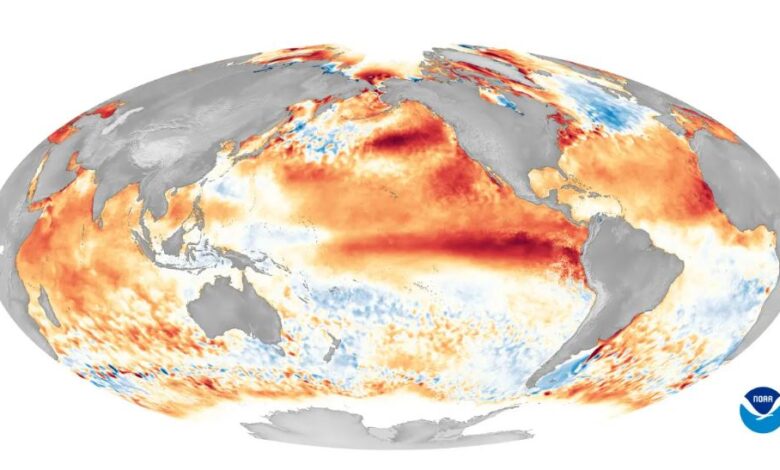What is the impact of El Niño in the world and what does its return mean this year?

The impact of El Niño varies greatly from region to region
In the last 5 years we have recorded the second hottest year ever globally, in 2020, and two of the hottest summers ever seen in Europe (2021 and 2022). All this happened during a phase characterized by La Niña, the “cold” equivalent of El Niño. Global temperatures are not the only elements of the Earth’s climate system that are affected by the two phases, cold and hot, of the atmospheric phenomenon known as El Niño – Southern Oscillation (El Niño – Southern Oscillation). What exactly is the impact of El Niño?
Return of El Niño in 2023
From April to May, eastern Pacific waters at the equator began to have an increasingly marked thermal anomaly. It is the signal associated with the development of El Niño. In mid-July the NOAA, the National Ocean and Atmospheric Administration of the United States, predicted that the Child would peak during the winter, then between 2023 and 2024, that the most likely scenario is that it has a moderate to strong intensity (81%) but that remains a chance in five (20%) that is instead of “historical” proportions. In theory, therefore, the impact of El Niño could be analogous or even greater than that of the most intense events in the last decades, in 1997 and 2015-16.
What is El Niño?
El Niño and La Niña are climatic patterns that occur in the Pacific and can affect the global climate. Technically it is a phenomenon of atmospheric teleconnection involving stationary winds (trade winds) and water temperature and distribution. ENSO is characterized by three phases: El Niño, La Niña and a neutral phase.
During the latter, the trade winds blow westward and move the warmer water masses in that direction. During El Niño, however, the winds blow more weakly and allow hot water to concentrate in the entire tropical Pacific. In the cold phase, the resumption of trade winds moves this hot water westward again, causing the tropical sector of the Pacific to cool.
This dynamic is cyclical. A positive or negative period of the oscillation typically lasts 9-12 months, but can also reach 3 years. A full cycle usually covers 5-7 years.
The impact of El Niño on the world

This periodic repositioning of hot water and convective air in the equatorial Pacific Ocean disturbs other large-scale atmospheric circulation patterns that shift heat and moisture from the tropics to mid-latitudes. El Niño can, for example, disturb jet currents at mid-latitudes, and thus affect temperatures and rainfall regimes even in regions far removed from the central Pacific. The Child does not have a single effect throughout the world: the repercussions vary from region to region.
In North America, El Niño is associated with colder and wetter winters in the southern part, while with milder winters in Alaska and northwest Canada. The Child usually increases the frequency and intensity of monsoons in the Pacific but reduces the number of hurricanes in the Atlantic.
read also El Niño 2023, there’s a 1 in 5 chance it’s “historic”
An average strong El Niño (as expected this year) is related to conditions of higher humidity and precipitation in western and southern Europe and drought in northern Europe. But a very strong phenomenon leads to drought in Western Europe. The increase in global warming should intensify these impacts on the European continent.
In Australia we can expect less rain, higher temperatures and increased fire risk, especially in winter and spring in the southern hemisphere.
South America is particularly affected. El Niño brings floods to the western coasts of Peru and Ecuador and droughts to the Amazon and the northeast, with crop failures as a result. The drop in rainfall and the rise in temperature in Colombia have been linked by studies to outbreaks of diseases that have mosquitoes as carriers, such as malaria and dengue fever.
Throughout the world, tropical forests tend to become drier and slow CO2 sequestration from the atmosphere due to slowing growth. The impact of El Niño is then felt in general on global temperatures. The oceans normally absorb more than 90% of the heat generated by solar radiation reaching the Earth. Cooler waters, such as those during the Niña, are more efficient at capturing heat. In contrast, warmer waters like El Niño absorb less heat. This alone can increase global temperatures by 0.2 degrees.





